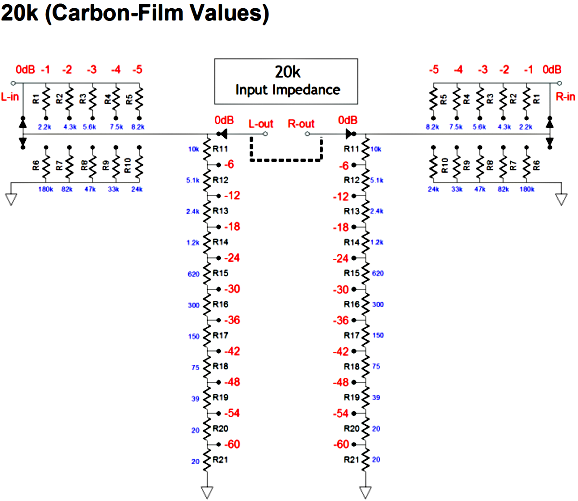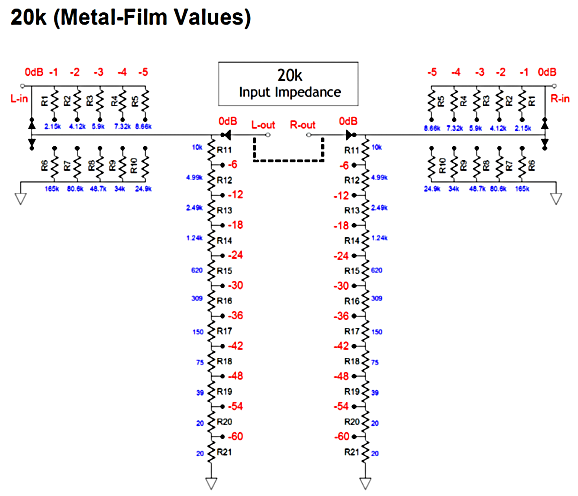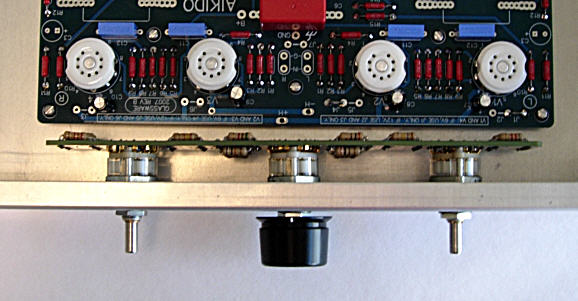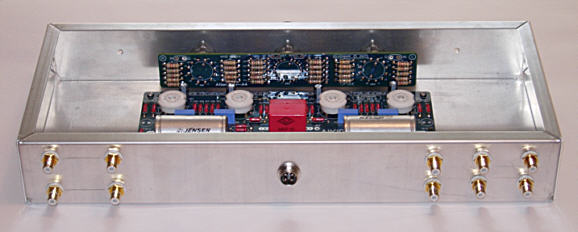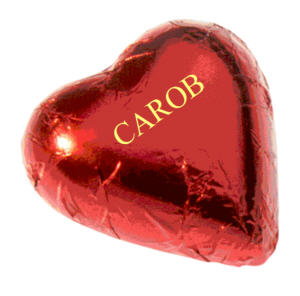| John Broskie's Guide to Tube Circuit Analysis & Design |
|
14 February 2008 Happy Valentines Day
My small Valentine's Day gift to tube fans is, first, a bog entry (you don't see one every day and usually not on a Thursday) and second, the introduction of the New and Improved TCJ Stepped Annuator kit.
After Many a Month, Returns the TCJ Stepped Attenuator
Although the old version won every sonic shootout it was in (with many super-expensive stepped attenuators in the competition), few could take it seriously, as it cost so little. (I get many e-mails begging me to sell more expensive stuff!) Also, it was a huge drag to source and maintain a supply of the old rotary switches. So, the new price will now be much higher for the kit (but still a bargain when compared to the competition). Ouch! Yes, but at the same time the TCJ stepped attenuator should outlast all of us, as I have stocked up on the more-expensive, solid, hard-gold version, not the less-expensive, gold-flash version of the switch, which everyone else is using. This point is critical, for although both versions look the same on the outside, on the inside there is a world of difference. Gold flash is certainly pretty, but it soon rubs off, leaving a plain brass or silver contact behind. Hey, isn’t silver a better conductor than gold? Indeed it is and it makes a better contact material when you are switching high-voltage, high-current loads—something audio stepped attenuators never do! In contrast, the small and fragile audio signal cannot burn off silver oxide tarnish; in addition, the Elma switches’ silver switching contact does not hold a knife edge, which would shave a thin layer of contact material off with each pass. (A switch with knife contacts requires periodic vacuuming, as the shavings can short out portions of the switch or circuit.)
In other words, for serious audio use, the hard-gold switch is the only one to use. (Soon, the rising price of gold, however, will make this switch too expensive to produce, or rather too expensive for Americans to buy, alas.)
TCJ Attenuator Overview
In other words, the attenuator holds its own balance control of sorts. The center knob controls the volume for both channels, and offers 11 coarse -6dB decrements; the flanking knobs offer six fine -1dB decrements for each channel, creating a volume control and balance control in one easy-to-use stepped attenuator. In other words, all three switches should be used to set the desired sound level. Far too many imagine that the flanking ladder stepped attenuators are only to be used when the source material is out of balance. Wrong. The way I like to use the TCJ attenuator is to set the flanking attenuators to their mid positions and then adjust the center switch until the sound is almost at the right volume, then I move the flanking switches up and down until the perfect sound level is achieved.
Passive Line Stages and the TCJ Stepped Attenuator Most CD players and stand-alone DACs, however, can easily deliver a healthy 2V to 3V of output voltage into a 20k load, which helps explain why passive line stages are so popular. In a passive line stage, the 20k input impedance is near perfect. On the other hand, if an old piece of tube gear expects to see a 250k or 500k load, then you better give it what it wants. For example, an old tube tuner that gave a low-frequency response down to 20Hz with a 500k load, will only go down to 500Hz with a 20k load.
What Was That Last Picture All About?
Why do does the chassis hold so many RCA jacks if it is intended solely for test-bed use? I need two sets of outputs, one for the main power amplifier and one for the powered subwoofers (I soldered in place two fixed attenuators on the subwoofer outputs). Second, one day I plan on selling or giving away the line stage amplifiers, so I have put in place all the holes that I will need in the future.
Carbon-Film Resistors? I have to admit that, until recently, I was prejudiced against carbon-film resistors. My present view is that all resistor types sound different from each other and that each can please some audiophiles, but none will please all—even the yet-to-be-achieved perfect resistor. Here’s a big tangent: five years ago I wrote a blog entry that held a letter that I had written to the editor of an electronic trade journal. This letter was a rebuttal of sorts and it included the following true story:
Here’s an other example, I used to know this fellow who is, among other things, a professional photographer of nude women (he himself had worked as a male model, so he knew life from both sides of the camera). I had just seen some of his amazing work and I asked him how did he manage to be in the same room with such beautiful naked women without drooling like an old bloodhound. He told me that sex never entered his mind, that he was so preoccupied with getting the best photograph—making sure the lighting was right and that the model’s position was correct and that the bottoms of her feet were dirt-free and that no skin blemishes or clothing-etched lines showed and that the lens was well suited—that he saw the model the way an emergency-room saw a naked patient, completely disinterested and dispassionately. I wasn’t sure that I believed him, thinking that his speech had been much practiced before his girlfriends; but then he added, “Besides, the photographs I take of models are much more attractive than the actual women that I photograph.” Then I believed him. Plato wasn’t far from wrong when he stated that Reality is overrated. And Pavlov, the fellow who conducted those famous conditioned-response experiments with dogs and bells, discovered that for many dogs their salivation was greater after hearing a bell ring than it would have been if they were just shown some food. Apparently, even dogs can imagine a juicier-than-real meal. Okay, back to resistors. The problem that carbon-film resistors face is that they are seen as being clunky and old-fashioned. The clunky part is only partially correct, as 1% carbon-film resistors are made and even ostensibly 5% carbon-film resistors actually measure closer to 2%, as production methods have improved greatly over the decades. And the charge of being old-tech is true, but only in the historical sense: carbon-film resistors predate metal-film resistors. It could have been otherwise; history could have taken another path and the carbon-film resistors would then seem newer and, thus, better.
Here’s an analogy: imagine that Mesoamerican peoples had never made chocolate beverages, that carob, not chocolate, predominated candy land. We would buy Lindt and Hershey's carob bars and order carob shakes with our burgers and fries. Then some enterprising health-food company might discover that seeds of the tropical cacao tree can be turned into a carob-like confection. Soon, all the health-food junkies would be stocking up on nutritious chocolate. Mothers would scold their children for not eating enough chocolate, the healthy carob substitute. In much the same way, metal-film resistors benefits from merely being developed at a later date. So, which is better, carbon-film resistors or metal-film resistors? The only answers I can give are both... or neither… or that the question itself is semantically devoid of content. Which is better: cinnamon or clove? Blond or brunette?
Okay, Okay, How Do I Buy These Cool New Stepped Attenuators? Download PDF of user guide.
Next Time
//JRB
|
E-mail from a GlassWare customer
High-quality, double-sided, extra thick, 2-oz traces, plated-through holes, dual sets of resistor pads and pads for two coupling capacitors. Stereo and mono, octal and 9-pin printed circuit boards available. Aikido PCBs for as little as $24 http://glass-ware.stores.yahoo.net/ Only $12.95 Download or CD ROM www.glass-ware.com
|
|||
| www.tubecad.com Copyright © 1999-2008 GlassWare All Rights Reserved |




